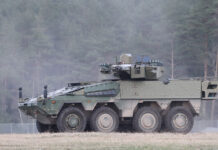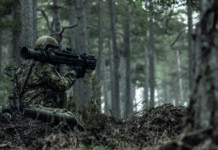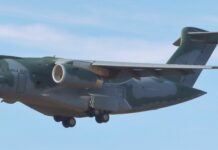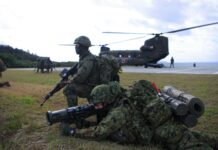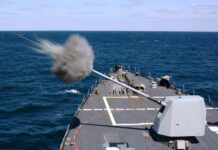LAND 159 is an ambitious multi-phase programme that will transform the capabilities of the Australian Defence Force (ADF) in terms of sniping, small arms, support weapons and associated munitions. Thus far the first phase of LAND 159 or Tranche 1 as it is referred to, is in operation with contract awards having been made. What is interesting in the context of Tranche 1 is that an unorthodox acquisition strategy was adopted with a unique level of industrial involvement.
LAND 159, also referred to as the Lethality System Project in Australia, has the following official Australian Department of Defence (DoD; also referred to as Defence Australia) description: “The Lethality System Project (LAND 159) will equip the ADF with next-generation weapon systems, surveillance and target acquisitions ancillaries, ammunitions, facilities and training and support systems. The Lethality System will ensure ADF ground combatants maintain a capability advantage over potential adversaries to beyond 2030, and will be delivered in three Tranches.
The first phase of LAND 159, Tranche 1, got underway with the release of a Request for Information (RFI) in November 2017. The idea was that Tranche 1 would be divided into two separate stages: “Stage 1 enables Defence (Defence Australia) to identify the most suitable weapons systems and prepare the business case for Government consideration.” This is followed by: ”Stage 2 is the follow-on acquisition and support of Tranche 1 weapon systems, which will occur following Government consideration at Second Pass.” Second Pass is a part of the Defence contracting process in which risk mitigation strategies, detailed cost estimates, the existence of funding availability is identified, and all necessary planning, consideration and consultation has been undertaken to assure successful programme implementation.
Contract Innovation
Where LAND 159 differed from a more typical acquisition programme was that in the RFI Defence was searching for what they described as ‘strategic and innovative contractual arrangements.’ This then led on to the issue of a Request for Proposals (RFP) to interested parties in January 2019, within which “innovative Supplier Engagement Model solutions for the delivery and support of capability” were sought. Effectively a partnership between government and industry was on the table. By June 2019 three potential industry partners had been identified and this led to the issue of a Limited Request for Tender (LRFT), responses to which would allow Defence to select its industrial partner.
In July 2020 Australian company NIOA were selected as the industrial partner, with them being appointed as the Prime Contractor for Stage 1 of Tranche 1. According to Defence Australia, the role of the Prime Contractor in Stage 1 is: “Approach the market on behalf of the Commonwealth (government) to identify and evaluate Tranche 1 weapon systems and provide acquisition and support recommendations to Defence.” They will then: “Produce high confidence cost data to support Government consideration of Tranche 1.” However, Defence Australia noted that: “The Commonwealth retains the ability to accept the recommendations of the Prime Contractor under Stage 1 or make alternative selections based on other considerations.”
As Stage 1 of Tranche 1 progressed, it became clear that this was a workable partnership arrangement rather than an adversarial process. Defence Australia stated that: “The Lethality System project has adopted an acquisition strategy for Tranche 1 based on an enduring industry partnership backed by robust Governance and Capability Assurance arrangements to enable confidence in the delivery of ‘best of breed’ weapon systems to the Australian Defence Force.”
According to NIOA as a part of their work for Stage 1 of Tranche 1: ”weapons and munitions specialists working alongside the Commonwealth project team, evaluated 649 products across weapons, ancillaries, and munitions for 11 mission systems before making its final recommendations to Defence in a 600-page report. The transparent, collaborative and rigorous process included 800 weapons and ammunition test serials with more than 31,000 rounds fired during evaluations off site and at NIOA’s Brisbane indoor range where it invested more than AUD 1 M in new testing equipment, specifically for the LAND 159 Project.”
Tranche 1 Programme
The LAND 159 Tranche 1 programme is divided into two segments: the ADF Sniper System and the ADF Close Combat System. The Sniper System includes a medium-range anti-personnel sniper capability, a long-range anti-personnel sniper capability, an anti-materiel sniper capability, a sniper surveillance capability and the creatively named ‘Sniper Soldier Combat Ensemble.’ The Close Combat System covers the acquisition of a hand-to-hand combat system or fighting knife, a sidearm weapon system or pistol, Personal Defence Weapon (PDW) system, a combat shotgun system and an assault breeching system. Tranche 1 commenced in FY22/23 and will continue through to FY24/25.
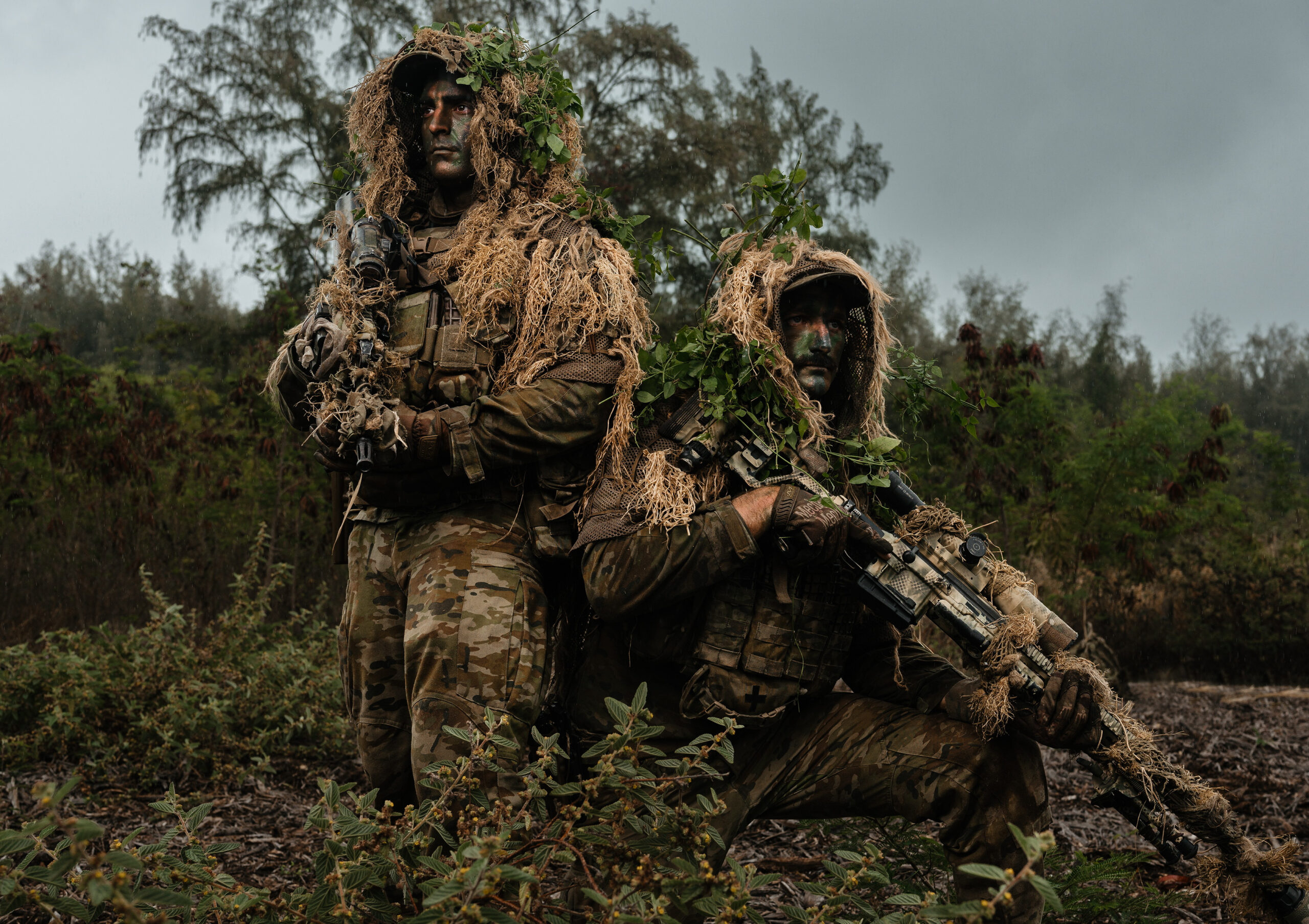
Credit: Australian DoD
Dealing with the Close Combat System elements first, the hand-to-hand combat system requirement was won by Australian company ZU Bladeworx’s Double-Edged Fighting Knife, the Benelli M3A1 was selected as the combat shotgun system and will replace the current Remington 870 shotgun. Like many Commonwealth nations, Australia had the Browning Hi-Power in 9×19 mm as the standard service pistol, this weapon was an excellent design in its day, but the world has moved on, hence Australia’s need for a new pistol. To meet the requirement the SIG Sauer P320 XCarry Pro in 9×19 mm was selected. The SIG Sauer P320 was also selected to fulfil the US Military M17/M18 Modular Handgun System (MHS) requirement in 2017.
For the PDW system, the SIG Sauer MCX was selected using the .300 Blackout (.300 BLK) calibre. The .300 BLK (7.62×35 mm) has been very popular with Special Forces, the same being true of the MCX system. In 2022, United States Special Operations Command (USSOCOM) selected the SIG Sauer MCX RATTLER to meet its PDW application, with the weapon set to be switchable between two calibres in the form of 5.56×45 mm and .300BLK. British Special Forces also use the MCX in .300BLK, replacing the MP5 in 9×19 mm, with Netherlands Maritime Special Operations Forces (MARSOF) also using the MCX in .300BLK. The MCX is also very popular with specialist police units, as well as Special Forces in Europe.
Turning to the Sniper System aspects of Tranche 1, it should be noted that the ADF already has a well provisioned sniping capability. The SR-98 sniper rifle is the Accuracy International (AI) Arctic Warfare (AW) in 7.62×51 mm, this replaced the Parker Hale Model 82. In the anti-materiel role there is the AI AW50F in 12.7×99 mm (.50 BMG) and the Barrett M82A2 in 12.7×99 mm. Other weapons are the Blaser 93 Tactical 2 in .338 Lapua Magnum (8.6×70 mm) and two sniping/designated marksman weapons in the form of the Knight Armament Company (KAC) SR-25 in 7.62×51 mm and the Heckler & Koch (HK) HK417 in 7.62×51 mm.
The sniper systems procured for Tranche 1 were the AI AX-SR for the long-range anti-personnel requirement, this has been acquired in a multi-calibre format and will be switchable between .338 Lapua Magnum, .300 Norma Magnum (7.83×64 mm) and 7.62×51 mm NATO. The anti-materiel sniper requirement will be met by the Barrett M107A1 in 12.7×99 mm, which will replace the Barrett M82A2 currently in service. The sniper surveillance capability was won by Safran with their JIM multifunction infrared binoculars.
As an aside, in January 2023, Robert Nioa, the CEO of NIOA, announced that NIOA had completed their 100% acquisition of sniper rifle manufacturer Barrett Firearms. Nioa stated that both companies had a business relationship since 2008 and both were family-owned companies. Barrett will operate as a separate division within the NIOA Group, with the acquisition announcement stating that all Barrett management and staff at the Murfreesboro manufacturing facility in Tennessee would be retained and production would continue as normal. The official NIOA release on the acquisition said that:“ Over time it is expected that manufacturing activities in Murfreesboro will be further expanded.”

Credit: NIOA
NIOA was established in 1973 and they describe themselves as: “the largest Australian-owned supplier of firearms, weapons and ammunition to the Australian and New Zealand defence forces, law enforcement agencies and commercial markets.” The company has emerged as a major local defence contractor, they are a major tenant of the Government owned/Contractor operated (GOCO) munitions factory in Benalla, Victoria, where they are recapitalising 120 mm tank ammunition and producing 30 mm cannon ammunition for the Boxer CRV acquired under LAND 400 Phase 2. The company also has the Major Munitions Contract (MMC) from the Australian government, covering the production of 50 different munition types over a five year period, extendible for a further ten years in two five-year increments.
The company is also active in the artillery sector, supplying the ADF with a family of advanced 155 mm artillery ammunition. In 2017, NIOA teamed with Junghans Microtec, Nitrochemie Aschau and Rheinmetall Denel Munitions to win the contract to deliver Assegai artillery ammunition. This led to the establishment of a joint venture company with Rheinmetall, Rheinmetall NIOA Munitions (RNM), and the establishment of a shell forging factory in Maryborough, Queensland. Other NIOA companies include the Australian Missile Corporation, Australia wishes to develop a sovereign missile capability, and NIOA New Zealand.
Tranche 2 Programme
Tranche 2 of LAND 159 will start in FY24/25 and is due to complete in FY26/27. There are three primary elements to this activity; the first covers the acquisition of a Close Combat Assault Rifle, the second cover a new family of machine guns and the third covers a Direct Fire Assault Weapon and new family of grenades. What is being considered here in terms of small arms is relatively straightforward, but much depends on how adventurous Australia wants to be in terms of weapons and calibres.
For the Close Combat Assault Rifle programme the aim is to replace the Thales Australia F90 5.56×45 mm assault rifle, a significantly enhanced version of the Steyr AUG. Depending on how open minded you were prepared to be, the sky is the veritable limit on how many different types of 5.56×45 mm assault rifle could be considered. If you were disposed towards a Battle Rifle type capability in 7.62×51 mm, again no shortage of possibilities. But, what if you were disposed towards looking beyond the standard 5.56 mm and 7.62 mm NATO rounds?
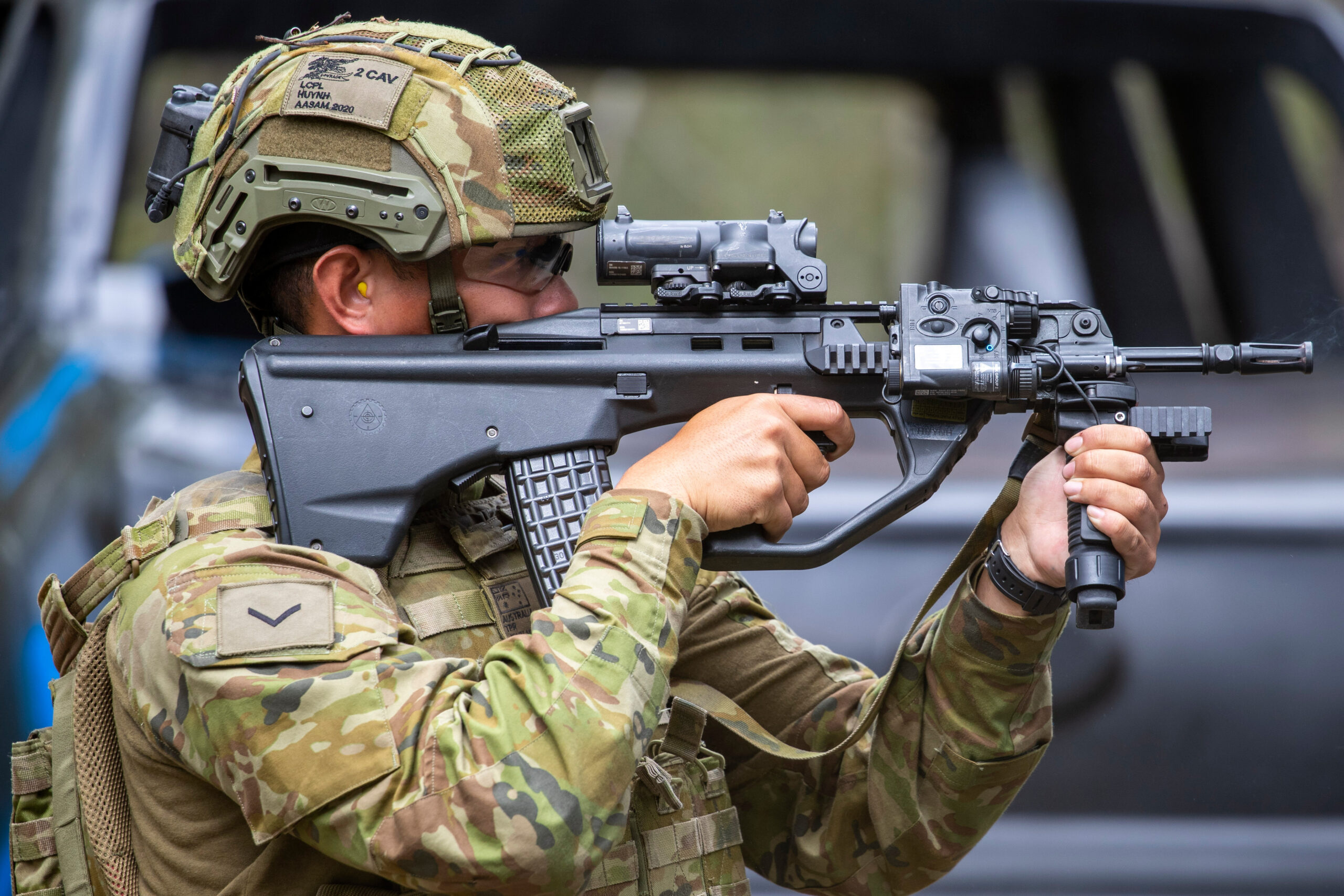
Credit: Australian DoD
Bearing in mind how often the ADF operates with the US military, why not follow the path of the US Army and head towards a new family of weapons and a new round? In April last year, SIG Sauer was selected for the US Army Next Generation Squad Weapons (NGSW) programme. The SIG Sauer XM5 was selected as the Next Generation Squad Weapon-Rifle (NGSW-R) to replace the M4/M4A1 carbine, with the XM250 being selected for the Next Generation Squad Weapon-Automatic Rifle (NGSW-AR) requirement to replace the M249 Squad Automatic Weapon (SAW), the US version of the FN Minimi. The NGSW weapons use the SIG Sauer 6.8×51 mm Common Cartridge, which features a hybrid metallic case.
Last year, the Lake City Army Ammunition Plant in Independence, Missouri, government-owned but operated by Winchester, started preparation for the manufacture of 6.8×51 mm ammunition for the US Army. Intriguingly, NIOA refers to the fact that they have a long-standing trusted relationship with the “Winchester-operated Lake City ammunition plant.” This might just be a coincidence, but it is a coincidence worth noting.
Australia does not have to follow the US Army though, there are other potential solutions for a future assault rifle being developed in Australia. Army Headquarters (AHQ) tasked Thales Australia with a study on developing a high pressure round based on a 7.62×51 mm case and investigating the characteristics necessary for a future weapon capable of using the new round. The Thales study found that a new round and a new weapon were viable, and this led AHQ to develop a requirement for the Close Combat Family of Weapons (CCFOW), essentially developing an Australian equivalent of NGSW, according to Australian media reports.
It appears that Thales Australia is working towards a Bullpup configuration weapon and that their selected round will be the 6.8×51 mm cartridge, albeit an Australian-developed round featuring a unique case design with new materials. The endgame is that AHQ appear to want an Australian CCFOW weapon and round that they can compete against the NGSW in terms of an assault rifle and LMG
The second part of Tranche 2 covers a new family of machine guns, the new light machine gun will replace the existing Minimi in 5.56×45 mm and 7.62×51mm. Again lots of choices in this category, but if the ADF chooses to follow what the US Army is doing, then the XM250 is a logical choice, or alternatively the LMG development of the Australian CCFOW. It should be noted that even though the US Army intends to have the 6.8×51 mm as its future round, it will still have large numbers of 5.56×45 mm and 7.62×51 mm weapons in service, so these older calibres will still be around for the long-haul. The Australians are also operating on the principle that support troops will continue to use the F90 in 5.56×45 mm.

Credit: SIG Sauer
Also required is a replacement for the 7.62×51 mm FN MAG (GPMG), replacement possibilities for this excellent weapon are limited. Indeed, one might meet the requirement by purchasing new MAG weapons and investigating composite cased rounds to reduce ammunition weight. The heavy machine requirement is for a replacement for the 12.7×99 mm M2HB, and once more there is a problem due to the fact that developing a viable Browning M2HB replacement has seen lots of people try, but very few succeed! One possible solution is new M2HB weapons, using polymer cased rounds that are 30% lighter than standard 12.7×99 mm rounds or other composite cased rounds to reduce ammunition weight.
The Direct Fire Support Weapon element of Tranche 2 covers a short-range direct fire support weapon (LAW replacement), medium-range direct fire support weapon (Carl Gustaf M3 replacement) and a long-range direct fire support weapon (missile system). The Carl Gustaf M3 will remain in service until it reaches time of life, its replacement is the Carl Gustaf M4 which is currently in service with more systems arriving, so that requirement is moot. There is also a programme for a new mortar system to replace current 60 mm and 81 mm systems and a requirement for a new hand grenade family.
Finally, there is Tranche 3 of LAND 159 which will commence in FY26/27 and conclude in FY28/29. Required here are a lightweight AGL, less-than-lethal munitions and command detonated munitions. The second part of Tranche 2 is focussed on ‘Emergent Weapons,’ in this context unmanned weapon systems and loitering munitions.
David Saw



